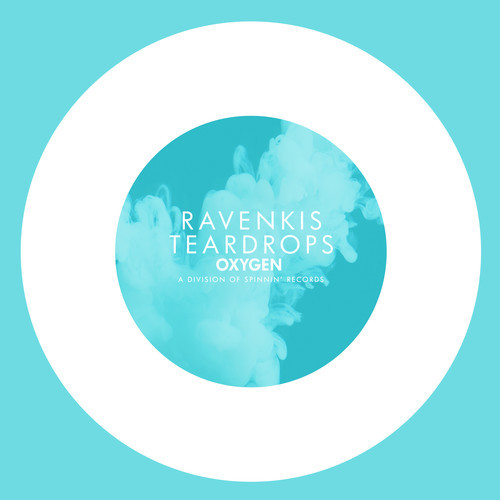-
 play_arrow
play_arrow
Fresh 106 Fresh 106
-
 play_arrow
play_arrow
London Calling Podcast Yana Bolder
Even In Progressive States Like New York, And Even Today, Slavery Is Stylish

Source: Image Source / Getty
There is a narrative about New York that seems to tell the story of a progressive state, a state that began ending slavery in 1817, concluding the process on July 5th, 1827, the first full day of slavery’s complete outlawing in New York, a free state, a North Star state. They rarely tell you it was the second to last Northern state to outlaw slavery, followed only by New Jersey.
Rather, we may learn that New York is the state in which Harriet Tubman would live out her final years, draw her final breath. School children–consistently victims of poorly rendered history books curricula and texts–will learn New York for its valor. Valor that was central to the birth of a revolutionary and democratic new nation.
But in an anti-critical race theory world, an anti-truth world, the topography of liberation that children will learn when learning about New York, will move them through the states’ brief reign as the new country’s capital and its designation as the place where the Bill of Rights was drafted; to George Washington’s first inauguration and his Mount Vernon (minus the part about slaves), and how New York is the place where the Supreme Court of the United States first sat in session. And most assuredly, they will learn of New York’s early role in defining commerce that was pivotal to the development of the nation, and now, the world.
Africans were the first Wall Street commodity traded at the intersection of Water and Pearl Street
But the liberalism of New York, and other similar North Star states would unravel if even the half was told. Like Africans were the first Wall Street commodity traded at the intersection of Water and Pearl Street. Or that New York’s transportation infrastructure that allowed for the state’s dominance in trade, was largely facilitated by incarcerated people–many of whom were early versions of those who are today incarcerated. Poor and locked up for being poor. Or for making a mistake wealthy people do, but are not called to account over. This doesn’t mean to exclude prisoners who were the most violent. But then, like now, they are more the exception than the rule.
But why am I talking about prisons in New York on the Fourth of July? Because here’s where the scheme to continue slavery legally, began. After building its first prison, Sing Sing, the one that spawned the phrase, sent up the river. After that came Auburn Prison and it was at Auburn that a national vision developed, one that persists to this day.
Prisons Come to Slavery’s Rescue
The second long-term institution of confinement built in the state had been up and running since 1816, a full year before the town of Auburn itself had even officially incorporated. And it was here that an effective money-making scheme developed. Auburn’s deputy warden, John C. Cray, was its mastermind. It would change the trajectory of the existing model of punishment, one that had been erected by the Quakers.
Quaker philosophy about prisoners held that if they were kept in total isolation and complete silence, having no influence save for Biblical study and a little piecemeal work to keep their hands busy, they would change, become people of good character. Godly people. That model was a reform to the way prisoners had been treated in colonial America. They’d been kept, largely, in open, unsanitary dungeons, and generally publicly and corporally punished.
Source: Juanmonino / Getty
Cray saw the efficacy of silence, what with the way its enforcement encroached and often destroyed a person’s sense of self. Silent prisoners were supplicant prisoners. But that piecemeal work was a slow drag operation and America was behind the UK in this new age of industry. Prisons, Cray argued, could be not only self-sustaining but wealth-generative. They could function with factory-like efficiency. He was right.
Within 20 years of its opening, Auburn became the first prison to shift to profit from the labor of its captives. It was a process, but it wasn’t hard. It found favor with New York’s mid-19th century legislators. Free labor versus paid labor had been a challenge between Northern residents and Southern ones where the majority of enslaved Africans were held and made to work, generation after generation. Guided by this and in response to the craftsmen’s concerns, in 1844 New York’s legislature passed an act that upheld convict labor, but limited it to the production of that which would otherwise be imported from foreign actors so as not to disrupt work done by local white craftsmen. It was a move that ensured New York’s economic dominance. Plus the timing was great.
The Erie Canal had been up and running for 20 years by then, cutting transport time by at least 25 percent and the cost of product movement per ton, from 100 dollars per 2,000 pounds to just five bucks making New York City’s international harbor a major hub for international trade.
That trade included the illegal allowance of Portuguese ships that still came across the Atlantic carrying Africans who had been the targets of a multinational war they did not know had been declared upon them. Kidnapped at gunpoint, raped, beaten and tortured for months on their own homeland, forced onto ships and chained in their own excrement, carried for three months across the big waters, African prisoners of war were held against New York own laws in the state’s harbor before being sold to points south. It was a sort of stealth backdoor–only sort of because it required the cooperation of harbor masters and others.
The 13th Amendment
The last known ship illegally carrying Africans to America, docked in New York’s harbor in 1858, just before the start of the Civil War. Which is why it’s no surprise to learn that New York State legislators held out on joining the Union’s side, making itself one of the last to do so, but one willing to be among those who ratified the 13th Amendment making slavery illegal, except in the case of prisoners.
Today, prisoners are forced into hard and harsh work that they are poorly trained for and are highly at risk doing: firefighting, asbestos removal, toxic waste removal, work with heavy equipment. The statistics on the number of harmed or dead prisoners, is unreliable.
Source: David McNew / Getty
And today, as we watch the United States cannibalize the rights it shows off to the world so shamelessly, it may be good to remember that it’s always been self-cannibalizing. We could argue that perhaps now the act is less opaque, but that probably wouldn’t stand up to scrutiny. The most recent Supreme Court decision about presidential immunity is terrible, but for us, I would argue likely no more terrible than the Dred Scott decision, or Dobbs, which proclaims that women have no right to body sovereignty.
From slavery to Jim Crow to mass incarceration and all terrible stops in between, America has never been a democracy, not even in the places, the cities like New York, that the world holds up as the most cosmopolitan and democratic.
That work demanded to make that statement true, remains in our hands.
SEE MORE:
Amid Juneteenth, The Legacy Of Slavery Is Still Enshrined In The Legal System
Hundreds Of Thousands Of People In Tennessee Voting Against Banning Slavery in 2022
The post Even In Progressive States Like New York, And Even Today, Slavery Is Stylish appeared first on NewsOne.
The post Even In Progressive States Like New York, And Even Today, Slavery Is Stylish appeared first on Black America Web.
, Why am I talking about prisons in New York on the Fourth of July? Because here’s where the scheme to continue slavery legally, began.
The post Even In Progressive States Like New York, And Even Today, Slavery Is Stylish appeared first on NewsOne.
The post Even In Progressive States Like New York, And Even Today, Slavery Is Stylish appeared first on Black America Web., , Read More, App Feed, Civil Rights & Social Justice, Newsletter, News Archives – Black America Web, [#item_full_content].
Similar posts
Featured post

Latest posts

‘Demure’ Named 2024 Word Of The Year

Wendy Williams Allegedly ‘Permanently Incapacitated’ From Dementia Diagnosis, Per Court Docs

Drake Accuses UMG & Spotify Of Inflating Success Of ‘Not Like Us’ With Bots, Immediately Gets Flamed On Social Media

10 Gift Ideas For The Intellectual Black Women In Your Life

Fowl Play: Resurfaced PETA Probe Claims Slaughterhouse Employee Sexually Assaulted Turkeys
Current show

Kenny J
For every Show page the timetable is auomatically generated from the schedule, and you can set automatic carousels of Podcasts, Articles and Charts by simply choosing a category. Curabitur id lacus felis. Sed justo mauris, auctor eget tellus nec, pellentesque varius mauris. Sed eu congue nulla, et tincidunt justo. Aliquam semper faucibus odio id varius. Suspendisse varius laoreet sodales.
closeUpcoming shows
Chart
Copyright 2024 Fresh 106 All Rights Reserved










 Invalid license, for more info click here
Invalid license, for more info click here